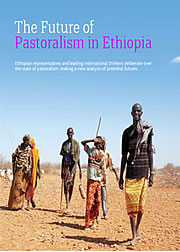{jathumbnail off} Ethiopian representatives and leading international thinkers deliberate overthe state of pastoralism, making a new analysis of potential futures Understanding of Pastor Pastoralism alismEthiopia has Africa’ Africa’s largest livestock population. Over 60% of its land area iss semi-arid lowland, dominated by the livestock economy economy.
Ethiopian representatives and leading international thinkers deliberate overthe state of pastoralism, making a new analysis of potential futures Understanding of Pastor Pastoralism alismEthiopia has Africa’ Africa’s largest livestock population. Over 60% of its land area iss semi-arid lowland, dominated by the livestock economy economy.
Today Ethiopia is looking day for a new and deeper understanding of its pastoralist regions and an accurate appreciation of their environmental and socio-economic trajectories. Ethiopians from the Federal and Regional governments and from traditional institutions met at the University of Sussex, Brighton, England in December 2006 to deliberate over the future for pastoralism in Ethiopia.
They discussed past and present pastoralist policies and policy processes and set out a policy objective that calls for ‘creating sustainable livelihoods and improved living conditions and reducing vulnerability vulnerability, risk and conflict in pastoral areas.’ They proposed to achieve, this through ‘enhanced socio-economic integration, recognition of pastoralists pastoralists’voice and maximising the potential of the pastoral economy economy.’
This report is drawn from evidence given by academic scholars in the fields ofeconomics, anthropology, environmental studies and political science, together with the deliberations of the Ethiopian team. It summarises the data and presents a fresh analysis of potential futures for pastoralists. It begins by setting out thefacts and figures in section one; putting forward evidence on influential longer-term factors that affect development in pastoralist regions.
The publication then looks toward the future, envisioning some of the choices pastoralists may make over the next 20 years. The analysis uses the research evidence to consider how the key influences on pastoralism may combine to shape the future. If market potential is high and environmental productivity is good, what is the most likely direction of development? Where are the benefitslikely to accrue and what risks do people face? Conversely, if markets are, inaccessible and population outstrips production from the natural environment,what would the likely outcomes then be? This combination of science and imagination produces a new new, more detailed and more realistic understanding, of the way pastoralism works and its future in Ethiopia.
